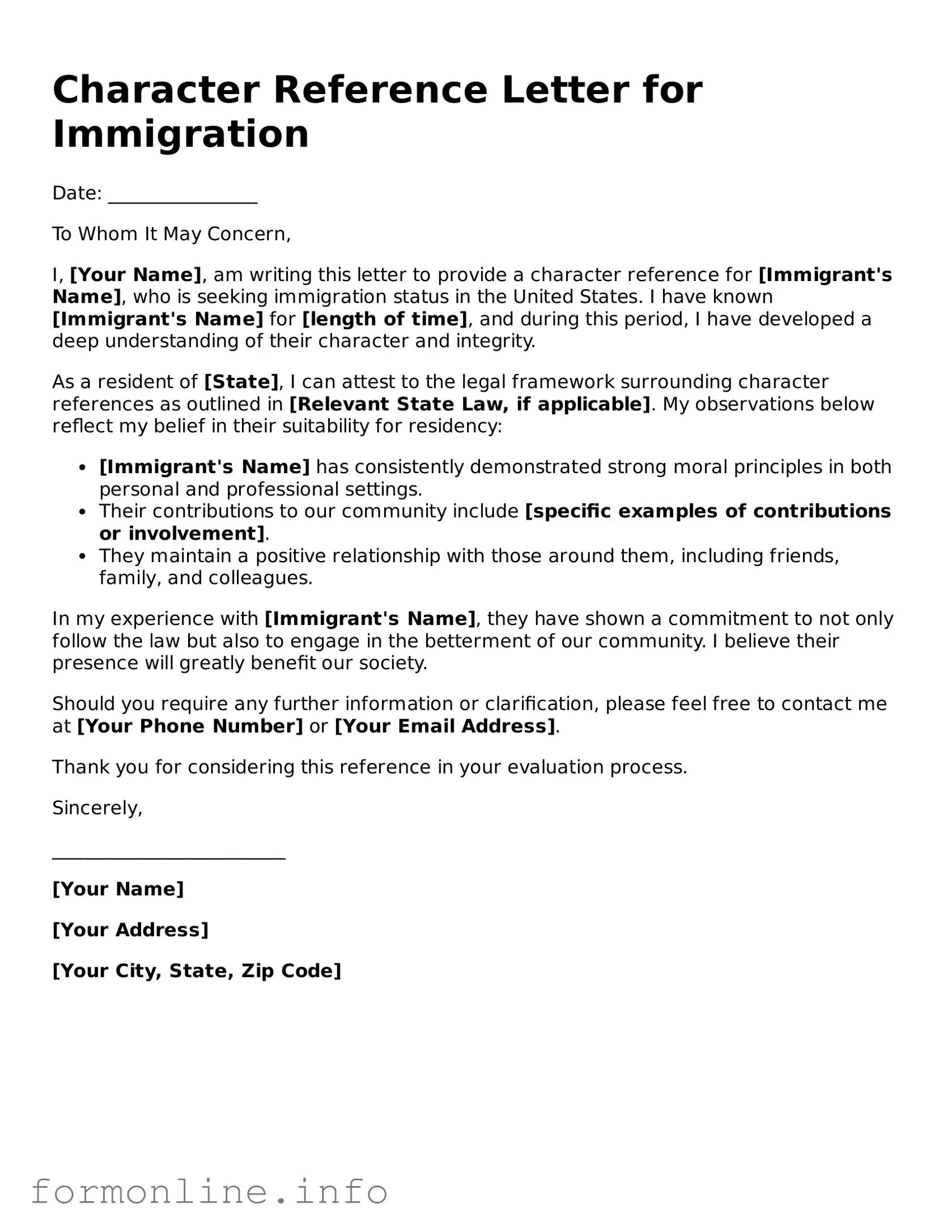A Character Reference Letter for Immigration is similar to a personal reference letter. Both documents serve to provide insight into an individual's character and personal qualities. A personal reference letter is often used in various contexts, such as job applications or college admissions, to highlight an individual's strengths, work ethic, and overall suitability for a position or program. The focus is on personal experiences and observations, creating a narrative that supports the individual's application.
Another similar document is the employment reference letter. This letter is typically provided by a former employer or supervisor and details an employee's job performance, skills, and contributions to the workplace. Like a character reference letter, it emphasizes the individual's positive traits and abilities. However, the employment reference letter is more focused on professional qualifications and achievements rather than personal attributes.
The academic reference letter shares similarities with the character reference letter, especially in the context of educational institutions. This document is written by teachers or professors who can attest to a student's academic performance, character, and potential for success in further studies. Both letters aim to provide a well-rounded view of the individual, but the academic reference is specifically tailored to educational settings.
A letter of recommendation also aligns closely with the character reference letter. This document is often requested in professional or academic contexts and provides an endorsement of the individual's skills, character, and suitability for a specific opportunity. While both letters serve to vouch for the individual, a letter of recommendation may be more formal and structured, focusing on specific qualifications relevant to the position or program.
The affidavit of support is another document that bears some resemblance to a character reference letter, particularly in immigration contexts. This legal document is completed by a sponsor who agrees to financially support an immigrant. While it primarily addresses financial responsibility, it often includes personal insights about the immigrant's character and intentions, similar to the character reference letter's purpose of attesting to the individual's good character.
A personal statement can also be compared to a character reference letter. This document is typically written by the individual applying for immigration or another opportunity, detailing their personal journey, motivations, and aspirations. While the character reference letter is written by someone else, both documents aim to present a compelling narrative about the individual, highlighting their positive attributes and experiences.
To further understand the role of a Character Letter for Court, it’s important to recognize that it serves to give insight into an individual's personal attributes and moral standing. Much like the function of a Character Reference Letter for Immigration, this letter aims to provide a strong testament to the person’s integrity and reliability. If you need a template or guidance on creating such a letter, you can visit legaldocumentstemplates.com/fillable-character-letter-for-court-form for assistance.
The statement of purpose is another similar document, particularly in academic applications. This document outlines an applicant's goals, motivations, and reasons for pursuing a specific program or opportunity. Like the character reference letter, it seeks to provide insight into the individual's character and aspirations, though it is more focused on academic and professional objectives.
Finally, a community service letter can be compared to a character reference letter. This document is often issued by organizations where an individual has volunteered, highlighting their contributions and impact on the community. Both letters emphasize the individual's character and commitment to helping others, showcasing their positive traits and values in a community context.
